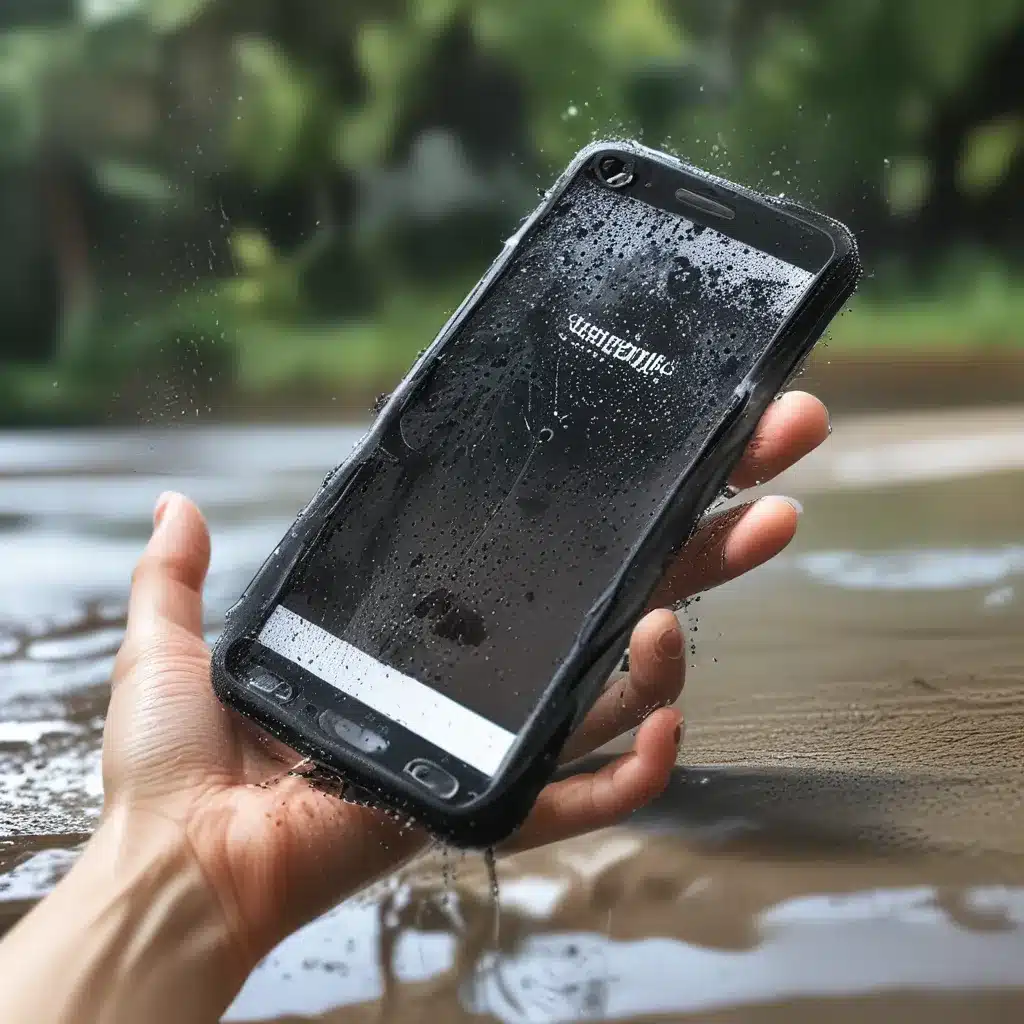The Smartphone Waterproofing Dilemma
As a self-professed tech enthusiast, I’ve always been fascinated by the incredible capabilities of modern smartphones. These pocket-sized marvels have become essential companions in our daily lives, serving as our gateways to the digital world. However, one persistent concern that often plagues us smartphone owners is the dreaded fear of liquid damage.
I remember the days when a simple splash of water could send my heart racing, as I frantically dried off my beloved device, praying that it would survive the ordeal. Those were the early smartphone days, when water resistance was a luxury, not a standard feature. But as technology has evolved, so too have the waterproofing capabilities of our smartphones. Or have they?
Recently, I’ve been reading some concerning reports about the water resistance of the latest iPhone models, including the iPhone 14 Pro. It seems that while these devices are touted as being water-resistant, some users have experienced issues with water damage, even in relatively mild conditions. This has left me wondering: just how waterproof are our smartphones, and what can we do to protect them from liquid catastrophes?
The Science Behind Waterproofing
To better understand the waterproofing capabilities of our smartphones, let’s dive into the science behind it. Waterproofing, or more accurately, “water resistance,” is achieved through a combination of design, materials, and manufacturing techniques.
Smartphone manufacturers use various methods to prevent water from infiltrating the device’s internal components. This includes sealing the device’s ports, buttons, and other openings with specialized gaskets and membranes. Additionally, the internal components are coated with water-repellent materials to create a barrier against moisture.
The degree of water resistance is typically measured using the Ingress Protection (IP) rating system. This rating, denoted as “IPX,” where X is a number from 0 to 8, indicates the level of protection against solid objects (the first digit) and liquids (the second digit). For smartphones, the water resistance rating is the one that matters most.
According to the information I found on Reddit, the iPhone 14 Pro and Pro Max are rated as IP68, which means they are designed to withstand submersion in up to 6 meters (approximately 19.7 feet) of water for up to 30 minutes. This seems impressive, but as the comments suggest, some users have still experienced water-related issues with their devices.
Debunking the Waterproof Myth
The truth is, while modern smartphones boast impressive water resistance capabilities, they are not truly “waterproof.” This is an important distinction that many consumers often overlook. As one user on the Apple Discussions forum pointed out, even with an IP68 rating, their iPhone 8 experienced water damage after being exposed to water that was far less than the rated depth and duration.
The reason for this is that the waterproofing measures employed by smartphone manufacturers are not foolproof. Over time, the seals and coatings can degrade, particularly with regular exposure to water, heat, and other environmental factors. Additionally, water can find its way into the device through tiny cracks, openings, or even during the manufacturing process.
It’s important to remember that the IP rating is not a guarantee of waterproofing, but rather an indication of the device’s level of water resistance. This means that while your smartphone may be able to withstand brief, shallow water exposure, it’s not advisable to submerge it in water or expose it to prolonged wet conditions.
Navigating the Risks: Tips for Smartphone Waterproofing
Now that we’ve debunked the myth of true waterproofing, let’s explore some practical tips to help you protect your smartphone from liquid damage.
Avoid Intentional Water Exposure
As the Reddit user mentioned, it’s generally not a good idea to intentionally expose your smartphone to water, even if it has a high IP rating. The water resistance is designed to withstand accidental spills or brief exposure, not prolonged submersion or intentional dunking.
Use Water-Resistant Accessories
One way to enhance the protection of your smartphone is to invest in water-resistant accessories. This could include a waterproof phone case, a screen protector with water-repellent properties, or even a waterproof pouch or sleeve for when you’re near bodies of water.
Dry Your Device Thoroughly
If your smartphone does come into contact with water, it’s crucial to dry it out as soon as possible. Gently pat it dry with a clean, soft cloth, and avoid using heat sources like hairdryers, as they can damage the internal components. Let your device air dry in a well-ventilated area, away from direct sunlight or heat.
Consider Warranty and Insurance
Even with the best precautions, accidents can still happen. That’s why it’s a good idea to consider purchasing a warranty or insurance plan for your smartphone. This can provide you with peace of mind and financial protection in the event of water damage or other unexpected issues.
Embracing the Future of Waterproofing
As technology continues to evolve, I’m hopeful that we’ll see even more robust waterproofing solutions for our smartphones. Imagine a future where we can confidently take our devices swimming, snorkeling, or even skydiving (not that I plan to try that anytime soon!).
In the meantime, it’s essential to understand the limitations of the current waterproofing technology and to take the necessary precautions to protect our beloved smartphones. By being mindful of the risks, using water-resistant accessories, and seeking appropriate warranty coverage, we can enjoy the convenience and capabilities of our devices without constantly worrying about liquid catastrophes.
So, the next time you’re caught in a sudden downpour or accidentally spill your morning coffee, remember the lessons we’ve learned today. Your smartphone may be a marvel of technology, but it’s not indestructible. With a little bit of care and vigilance, you can keep your device safe and dry, no matter what life throws your way.
And who knows, maybe one day we’ll be able to take our smartphones on deep-sea diving adventures without a second thought. Until then, I’ll be happily keeping mine firmly out of the water, while dreaming of the waterproofing wonders to come.













